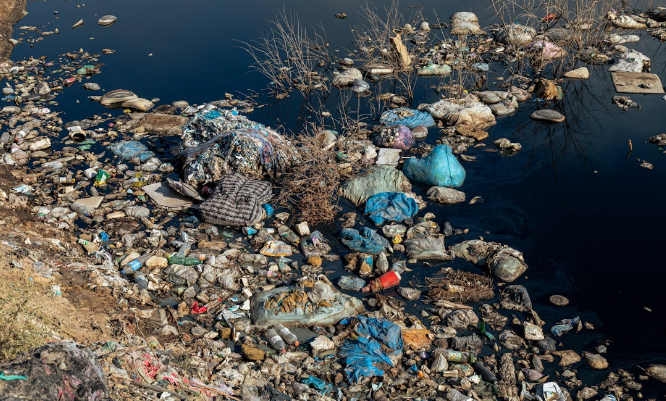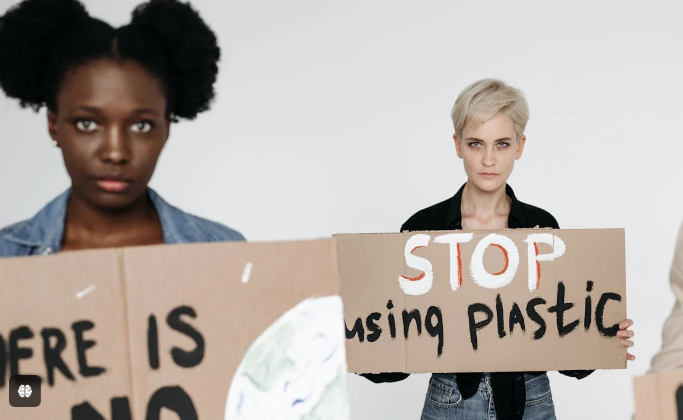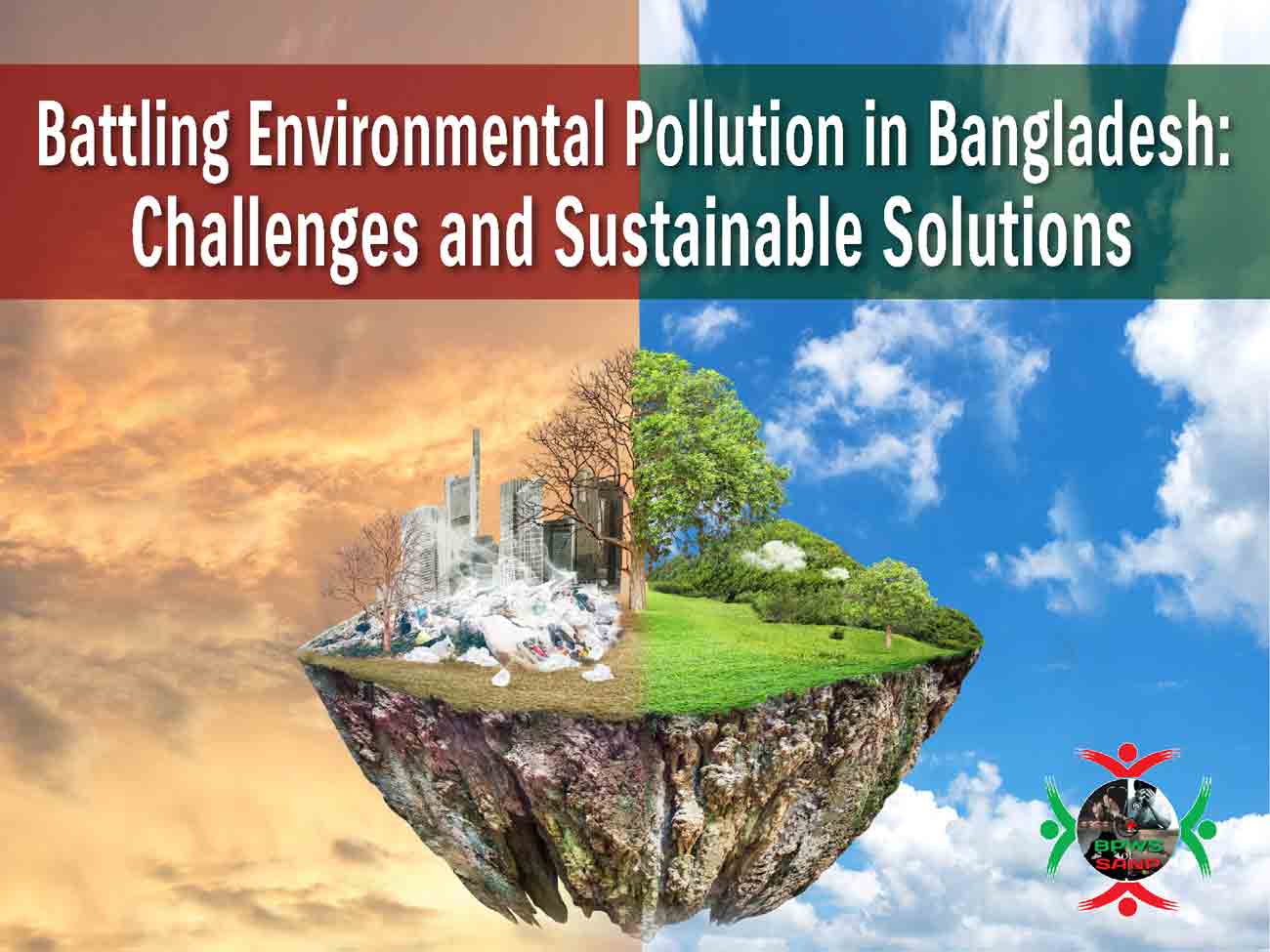
Bangladesh faces severe environmental pollution due to rapid industrialization and urbanization. Sustainable solutions are essential to combat this crisis.
Environmental pollution in Bangladesh has reached alarming levels, affecting air, water and soil quality. Rapid industrialization, unplanned urban growth and inadequate waste management systems contribute significantly to this problem. Factories discharge pollutants into rivers, leading to water contamination while vehicle emissions and industrial activities degrade air quality.
Serious health risks to the population and threat to biodiversity are possessed by these issues. To address these challenges, Bangladesh must adopt sustainable practices, enforce stricter environmental regulations, and invest in green technologies. Public awareness and community involvement are also crucial in the fight against pollution, ensuring a healthier and more sustainable future for the country.
Introduction To Bangladesh’s Pollution Crisis
Bangladesh faces a severe pollution crisis. The country’s rapid development has led to significant environmental challenges. Air, water, and soil pollution are prevalent, affecting millions of lives.
Country’s Rapid Industrialization
Bangladesh’s industrialization has raised quickly. Factories and industries have increased pollution levels. The textile and garment sectors are major contributors. They release harmful chemicals into rivers and air.
The brick manufacturing industry also adds to air pollution. Many factories use outdated technology. This results in high emissions of carbon dioxide and other pollutants.
| Industry | Pollutants |
|---|---|
| Textile | Chemicals, dyes |
| Garments | Fabric waste, dyes |
| Brick Manufacturing | Carbon dioxide, particulate matter |
Impact On Health And Ecosystems
Pollution has severe impacts on health. People suffer from respiratory issues and skin diseases. Contaminated water leads to waterborne diseases.
- Asthma and bronchitis from air pollution
- Skin rashes from chemical exposure
- Diarrhea from polluted water
Ecosystems are also affected badly. Rivers and lakes are polluted. Fish and aquatic life are dying. This disrupts the food chain and harms biodiversity.
Bangladesh needs sustainable solutions to tackle this crisis. Cleaner technologies and stricter regulations are essential. Public awareness and community involvement can also help reduce pollution.
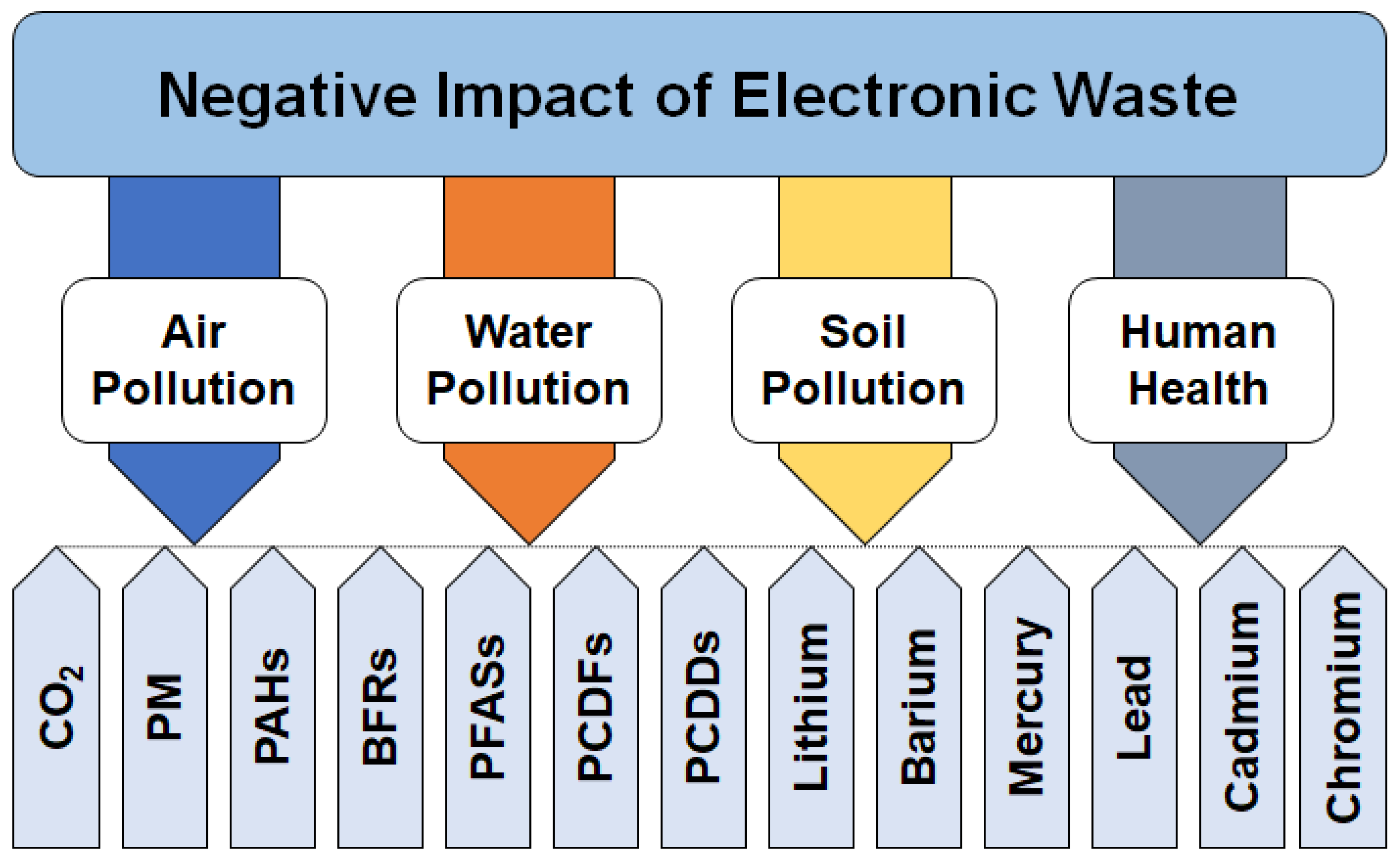
Credit: www.mdpi.com
The Air Quality Conundrum
Bangladesh faces a significant challenge with air quality. The rapid urbanization and industrialization are major contributors. This issue affects millions living in urban areas. The situation demands immediate attention and sustainable solutions.
Sources Of Air Pollution
Several factors contribute to the poor air quality in Bangladesh:
- Vehicle emissions: The growing number of cars and buses emit harmful gases.
- Industrial activities: Factories release pollutants into the atmosphere.
- Construction dust: Ongoing construction projects add dust particles to the air.
- Brick kilns: Traditional brick-making processes release smoke and toxins.
These sources make the air unhealthy to breathe. The authorities need to identify and control these pollution sources.
Effects On Urban Populations
Air pollution has serious effects on urban populations:
| Health Impact | Description |
|---|---|
| Respiratory diseases | Increased cases of asthma and bronchitis. |
| Cardiovascular issues | Higher risks of heart attacks and strokes. |
| Child development | Negative effects on children’s lung growth. |
People living in cities are most affected. Poor air quality can reduce life expectancy and increase healthcare costs.
Water Pollution And Its Perils
Water pollution in Bangladesh exerts severe threats to health and environment. Contaminated water sources lead to widespread diseases. Polluted rivers and coastal areas disrupt marine ecosystems. Addressing water pollution is crucial for sustainable development.
Rivers At Risk
Industrial waste causes significant pollution to Bangladesh’s rivers. Factories dump chemicals directly into rivers. This practice contaminates drinking water supplies. Farmers use polluted water for irrigation, affecting crop quality. Major rivers like the Buriganga suffer from high toxicity levels.
| River Name | Pollution Source | Impact |
|---|---|---|
| Buriganga | Industrial Waste | High Toxicity Levels |
| Shitalakhya | Sewage Disposal | Contaminated Drinking Water |
| Karnaphuli | Ship-breaking Yards | Marine Life Decline |
Threat To Marine Life And Fisheries
Water pollution jeopardy marine life in Bangladesh. Toxic chemicals from industries affect fish populations. Contaminated water leads to fish kills and biodiversity loss. Fishermen struggle as fish stocks decline.
- Decreased fish populations hurt local economies.
- Polluted waters disrupt breeding grounds.
- Marine species face extinction risks.
Effective waste management can protect marine habitats. Sustainable fishing practices help maintain fish populations. Community involvement is essential for conservation efforts.
Soil Contamination Issues
Bangladesh faces soil contamination issues due to various human activities. These activities harm the environment and public health. Let’s explore two primary causes: agricultural chemicals and industrial waste.
Agricultural Chemicals’ Aftermath
Farmers in Bangladesh often use chemical fertilizers and pesticides in order to boost crop yields. These chemicals seep into the soil and contaminate it. The soil’s natural nutrients deplete over time. This makes the land less fertile for future crops.
Use of pesticides can also kill beneficial soil organisms. These organisms help in decomposing organic matter. Their absence disrupts the soil’s natural processes. This leads to poorer crop quality and lower yields.
Here is a table showcasing common agricultural chemicals and their effects on soil:
| Chemical | Effect |
|---|---|
| Nitrogen Fertilizers | Reduces soil fertility over time |
| Pesticides | Kills beneficial soil organisms |
| Herbicides | Contaminates groundwater |
Industrial Waste Challenges
Industrial waste is another major cause of soil contamination in Bangladesh. Factories often dispose of waste directly into the land. This includes harmful chemicals and heavy metals. These pollutants seep into the soil and groundwater.
Common pollutants from industrial waste include:
- Lead
- Mercury
- Cadmium
These substances can severely be harmful for health. They can also harm the ecosystem. Plants absorb these toxins through their roots. Animals that eat these plants also get affected. This creates a chain of contamination.
Addressing these issues needs strict regulations and sustainable practices. Cleaner production methods can reduce industrial waste. Organic farming can minimize chemical use in agriculture. Together, these steps can help restore soil health in Bangladesh.
Waste Management Woes
Bangladesh faces severe challenges in managing waste. The situation is critical in urban areas. Waste piles up on streets, causing health risks. Effective waste management is urgent. This section explores key issues and solutions.
Urban Solid Waste Crisis
Urban population in Bangladesh is growing rapidly. This growth leads to increased waste generation. Cities like Dhaka produce thousands of tons of waste daily. Most of this waste is not collected properly. Streets and rivers become dumping grounds. This creates serious health and environmental problems.
Informal settlements in cities lack proper waste services. Residents burn waste, releasing toxic fumes. Open dumpsites attract pests and spread diseases. The waste crisis in urban areas needs immediate action.
Lack Of Recycling Infrastructure
Recycling infrastructure in Bangladesh is not fully developed. Most waste ends up in landfills. Valuable materials like plastics and metals are not recovered. This wastes resources and harms the environment.
Few recycling plans exist and they face many challenges. Lack of funding and technology limits their operations. Public awareness about recycling is also low. People do not separate waste at the source. Educating the public can improve recycling rates.
Investing in recycling infrastructure can solve many problems. Setting up more recycling plants is important. Encouraging public participation through awareness campaigns is important. Better policies and regulations can support these efforts. Bangladesh can turn waste into resources with these steps.
| Challenges | Solutions |
|---|---|
| Urban waste crisis | Proper waste collection systems |
| Lack of recycling infrastructure | Investment in recycling plants |
| Low public awareness | Education campaigns |
The Plight Of Plastic Pollution
The battle against environmental pollution in Bangladesh is difficult. One of the most pressing issues is plastic pollution. This problem impacts both urban and rural areas. Plastic waste clogs rivers, chokes marine life, and litters landscapes. Addressing plastic pollution is crucial for Bangladesh’s environmental health.
Single-use Plastic Overuse
Single-use plastics are usual in Bangladesh. People use them for packaging and daily needs. These plastics are cheap but harmful. They are not biodegradable. As a result, they pile up in landfills and waterways. Reducing single-use plastic is essential for a cleaner environment.
| Source of Plastic Waste | Impact |
|---|---|
| Plastic Bags | Block drains, cause floods |
| Plastic Bottles | Pollute water bodies |
| Food Wrappers | Harm wildlife |
Marine Ecosystems In Jeopardy
Plastic waste affects marine ecosystems in Bangladesh. Many rivers flow into the Bay of Bengal. These rivers carry plastic waste to the sea. Marine animals mistake plastic for food. Ingesting plastic can be fatal for them.
Plastic waste also damages coral reefs. Coral reefs support marine life. Protecting these ecosystems is vital for biodiversity. Efforts to clean rivers and reduce plastic use can help.
Steps to protect marine life:
- Ban single-use plastics
- Promote reusable items
- Organize cleanup drives
Tackling plastic pollution requires collective effort. Education and awareness can drive change. Everyone must play their part.
Greenhouse Gas Emissions And Climate Change
Bangladesh is facing serious environmental issues. One of the biggest challenges is greenhouse gas emissions. These emissions contribute to climate change, affecting the entire country. Let’s explore the impact and solutions for this pressing issue.
Bangladesh’s Carbon Footprint
Bangladesh has a growing economy. This growth leads to higher carbon emissions. Factories, vehicles, and industries all release harmful gases. These gases trap heat in the atmosphere.
According to reports, Bangladesh emits around 0.56 metric tons of CO2 per capita. This may seem small, but it adds up quickly. The country must take steps to reduce its carbon footprint.
| Source of Emission | Percentage |
|---|---|
| Transportation | 15% |
| Industry | 30% |
| Agriculture | 25% |
| Residential | 20% |
| Others | 10% |
Vulnerability To Climate Impacts
Bangladesh is very vulnerable to climate change. Rising sea levels threaten coastal areas. Floods and storms are becoming more frequent.
The country faces many challenges:
- Increased flooding
- More intense cyclones
- Erratic weather patterns
These challenges affect agriculture and livelihoods. Farmers lose crops due to erratic weather. People lose homes to floods and storms.
Sustainable solutions are needed. Renewable energy and green technologies can help. Community involvement is also crucial.
- Promote solar and wind energy
- Implement energy-efficient practices
- Encourage reforestation
Bangladesh needs to act now. Reducing emissions and adapting to climate impacts is essential. Every step taken can make a big difference.
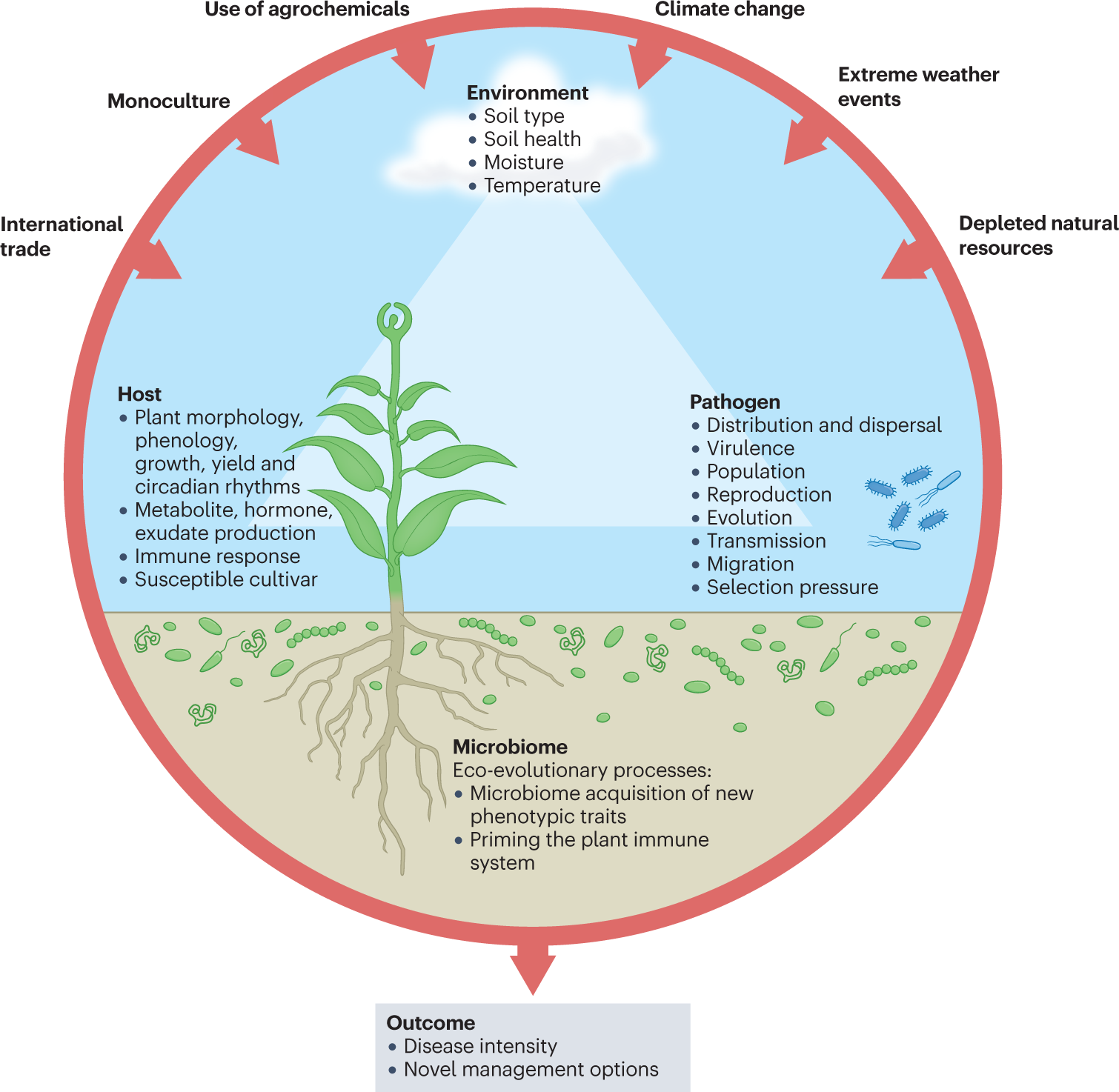
Credit: www.nature.com
Policy Framework For Pollution Control
Bangladesh faces severe environmental pollution. Effective policies are crucial. The government has introduced various regulations to combat pollution.
Existing Regulations
The Bangladesh Environment Conservation Act (1995) is a key regulation. It aims to protect the environment and control pollution. This act sets standards for air, water, and soil quality.
The Environmental Conservation Rules (1997) support this act. They outline specific guidelines for industries. These rules demand industries to treat waste before disposal.
The National 3R Strategy for Waste Management (2010) focuses on reducing, reusing, and recycling waste. This strategy promotes sustainable practices among citizens and industries.
| Regulation | Year | Focus Area |
|---|---|---|
| Bangladesh Environment Conservation Act | 1995 | General Pollution Control |
| Environmental Conservation Rules | 1997 | Industrial Waste Management |
| National 3R Strategy | 2010 | Waste Reduction |
Enforcement Challenges
Enforcing these regulations is challenging. Limited resources hinder effective monitoring. The lack of trained personnel affects the enforcement process.
Corruption within regulatory bodies is another issue. This corruption leads to lax enforcement. Many industries fail to comply with regulations.
Citizens’ lack of awareness about pollution laws is also a problem. Public education campaigns are needed. They can help people understand the importance of these laws.
- Limited resources for monitoring
- Lack of trained personnel
- Corruption within regulatory bodies
- Lack of public awareness
Community Engagement In Environmental Protection
To tackle environmental pollution in Bangladesh, engaging communities is crucial. Grassroots efforts often lead to lasting changes. Local involvement ensures that solutions are practical and widely accepted.
Public Awareness Campaigns
Public awareness campaigns play a vital role in educating citizens. These campaigns help people understand the impact of pollution. They teach ways to reduce waste and conserve resources.
Schools, NGOs and government agencies often lead these campaigns. They use various methods to reach a broad audience, including:
- Workshops and seminars
- Leaflets and posters
- Social media platforms
These efforts aim to change daily habits and promote a greener lifestyle.
Grassroots Movements
Grassroots movements are powerful tools for environmental protection. They bring together like-minded individuals to tackle pollution.
These movements often start small but grow quickly. They focus on local issues that affect communities directly. Some common activities include:
- Tree planting drives
- Clean-up events
- Advocacy for policy changes
Such initiatives create a sense of ownership among residents. They empower people to take action and make a difference.
| Activity | Impact |
|---|---|
| Tree Planting | Improves air quality |
| Clean-up Events | Reduces local pollution |
| Policy Advocacy | Leads to stricter regulations |
Innovative Approaches To Clean Energy
Bangladesh faces significant challenges with environmental pollution. One major solution involves innovative approaches to clean energy. These approaches focus on reducing pollution and promoting sustainability. Let’s explore the potential and barriers of renewable energy in Bangladesh.
Renewable Energy Potential
Bangladesh has huge potential for renewable energy. The country receives abundant sunlight, making solar power a viable option. Rural areas can benefit greatly from solar energy systems. Wind energy is another promising source, especially in coastal regions.
Hydropower can also play a key role in clean energy production. Small-scale hydro projects could provide electricity to remote areas. Biomass energy is another renewable source. Agricultural waste can be converted to energy, reducing pollution and providing power.
Barriers To Adoption
Despite the potential, there are several barriers to adoption of renewable energy. High initial costs deter many from investing in solar and wind systems. Limited access to technology and expertise also hampers progress.
Inconsistent government policies create uncertainty for investors. A lack of financial incentives discourages adoption. Additionally, there is inadequate infrastructure to support renewable energy projects. Many areas lack the necessary grid connections.
Public awareness is also low. Many people are unaware of the benefits of renewable energy. Education and outreach programs are essential to increase adoption.
| Renewable Source | Potential | Challenges |
|---|---|---|
| Solar Power | High | High initial cost, lack of technology |
| Wind Energy | Moderate | Inconsistent policies, high cost |
| Hydropower | Moderate | Infrastructure issues, geographical limitations |
| Biomass Energy | High | Lack of awareness, technology access |
Bangladesh needs a concerted effort for overcoming these barriers. Government support, financial incentives and public awareness campaigns are crucial. By addressing these challenges, Bangladesh can harness its renewable energy potential effectively.
Sustainable Agriculture Practices
For battling environmental pollution in Bangladesh, sustainable agriculture is vital. These practices help conserve resources and protect the environment. By adopting sustainable methods, farmers can improve soil health and reduce pollution.
Organic Farming
Organic farming eliminates synthetic chemicals and fertilizers. It uses natural methods to enhance soil fertility. Farmers use compost, manure, and crop rotation. These techniques improve soil structure and nutrient content.
Organic farming also supports biodiversity. It encourages the growth of beneficial insects and plants. This reduces the need for chemical pesticides.
- Improves soil health
- Supports biodiversity
- Reduces chemical usage
Soil Conservation Techniques
Soil conservation techniques prevent soil erosion and degradation. They maintain soil fertility and structure. These methods include contour plowing, terracing, and cover cropping.
| Technique | Description |
|---|---|
| Contour Plowing | Plowing along the contour lines of the land. |
| Terracing | Creating terraces on steep slopes to reduce erosion. |
| Cover Cropping | Planting cover crops to protect soil from erosion. |
These techniques help retain water and reduce runoff. They also increase organic matter in the soil. This leads to better crop yields and healthier soil.
- Retains water
- Reduces runoff
- Increases organic matter
Conservation Efforts For Natural Resources
Bangladesh faces serious environmental pollution. Conservation efforts are crucial to protect natural resources. These efforts help secure a sustainable future for the country.
Protecting Forests And Biodiversity
Bangladesh’s forests are home to various species. Protecting them is vital. Deforestation is a major threat. It causes loss of habitat and biodiversity.
The government is taking initiatives to protect forests. They are creating protected areas and national parks. These areas serve as safe havens for wildlife.
Local communities are also involved. They participate in reforestation programs. These programs help restore lost trees and habitats.
Conservation organizations are active too. They conduct research and raise awareness. Their efforts aim to educate the public on the importance of forests.
Sustainable Water Usage
Water is a precious resource in Bangladesh. Sustainable usage is essential. Overuse and pollution are major challenges.
Efforts are being made to promote efficient water use. Farmers are adopting modern irrigation techniques. These techniques help save water and increase crop yields.
Rainwater harvesting is gaining popularity. It provides an alternative source of water. This reduces dependence on groundwater.
Wastewater treatment plants are being established. These plants clean polluted water. Clean water is then reused for various purposes.
Communities are educated on water conservation. They learn how to reduce water waste. This helps ensure a steady supply of clean water.
| Conservation Effort | Impact |
|---|---|
| Protected Areas | Safeguards wildlife habitats |
| Reforestation Programs | Restores lost trees |
| Modern Irrigation | Saves water |
| Rainwater Harvesting | Reduces groundwater use |
| Wastewater Treatment | Provides clean water |
International Support And Collaboration
Bangladesh faces significant challenges to address environmental pollution. International support and collaboration play a crucial role in tackling these issues. Foreign aid, expertise, and global initiatives can help Bangladesh implement sustainable solutions. Let’s explore how these elements contribute to battling pollution.
Foreign Aid And Expertise
Foreign aid provides necessary financial resources to Bangladesh. These funds help in developing infrastructure and technology to combat pollution. International organizations and countries offer technical expertise and training. This knowledge transfer is vital for local professionals.
Here is a table summarizing some key sources of foreign aid and expertise:
| Source | Type of Support | Impact |
|---|---|---|
| World Bank | Financial Aid | Infrastructure Development |
| UNDP | Technical Expertise | Training Programs |
| USAID | Research Grants | Environmental Studies |
Global Environmental Initiatives
Bangladesh participates in global environmental initiatives. These initiatives foster international cooperation and resource sharing. Examples include:
- Paris Agreement: Aims to reduce greenhouse gas emissions.
- Green Climate Fund: Provides financial support for climate projects.
- Global Environment Facility: Funds projects to protect the environment.
Participation in these initiatives helps Bangladesh access international resources. It also ensures adherence to global standards and best practices.
By leveraging international support, Bangladesh can make significant strides in battling environmental pollution. These collaborations provide the necessary tools and knowledge for sustainable solutions.
Moving Forward: A Blueprint For Action
Bangladesh faces serious environmental pollution. The country needs a clear plan to combat it. A blueprint for action is essential. This plan will guide efforts to reduce pollution and protect the environment.
Strategic Planning And Goals
Effective action requires a strategic plan. This plan should set clear goals. These goals should be specific, measurable, and time-bound. For example, reducing air pollution by 30% in five years.
| Goal | Target | Timeline |
|---|---|---|
| Reduce Air Pollution | 30% | 5 Years |
| Increase Green Spaces | 20% | 3 Years |
Stakeholder involvement is crucial. Government, businesses, and citizens must work together. Each group has a role to play in achieving these goals.
Measuring Progress And Success
Tracking progress is vital. Regular monitoring and evaluation help assess the effectiveness of actions. Use key performance indicators (KPIs) to measure success.
- Air Quality Index (AQI)
- Water Quality Levels
- Green Space Coverage
Reporting is also important. Publish progress reports regularly. This transparency builds trust and encourages continued support.
Adapting strategies as needed ensures continuous improvement. Adjust plans based on data and feedback.
By setting clear goals and measuring progress, Bangladesh can combat pollution effectively. This blueprint for action will guide efforts towards a cleaner, healthier environment.

Credit: www.bloomberg.com
Frequently Asked Questions
What Are The Sustainable Solutions For Pollution?
Sustainable solutions for pollution include using renewable energy, reducing waste, promoting public transportation, supporting eco-friendly products, and conserving water.
What Are The Initiatives For Sustainability In Bangladesh?
Bangladesh develops sustainability through renewable energy projects, afforestation programs, waste management initiatives and eco-friendly farming practices. The government supports green technology and clean energy to reduce carbon emissions.
How Can We Stop Environmental Problems And Live In A Sustainable Environment?
Adopt renewable energy sources, reduce waste, recycle, and support sustainable practices. Plant trees, conserve water, and use eco-friendly products.
What Are The Possible Solutions To Environmental Pollution?
Possible solutions to environmental pollution include reducing plastic use, promoting renewable energy and increasing recycling efforts. Plant more trees and support green transportation. Advocate for stricter pollution regulations. Educate the public on environmental conservation.
Conclusion
Bangladesh faces significant challenges to battle against environmental pollution. Sustainable solutions are essential for a cleaner future. Community involvement and government policies can lead to significant developments. Embracing green technologies and renewable energy will further help. Together, we can create a healthier environment for future generations.
 Prevention from Suicide, Addiction, Narcotics and Pollution. Withdrawal and Recovery Facts of Narcotics | Symptoms of Suicidal thoughts & Ideations | Effects of Environment Pollution | Understand Addiction withdrawal
Prevention from Suicide, Addiction, Narcotics and Pollution. Withdrawal and Recovery Facts of Narcotics | Symptoms of Suicidal thoughts & Ideations | Effects of Environment Pollution | Understand Addiction withdrawal

